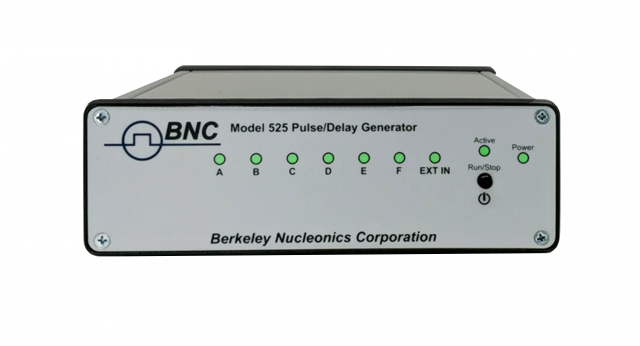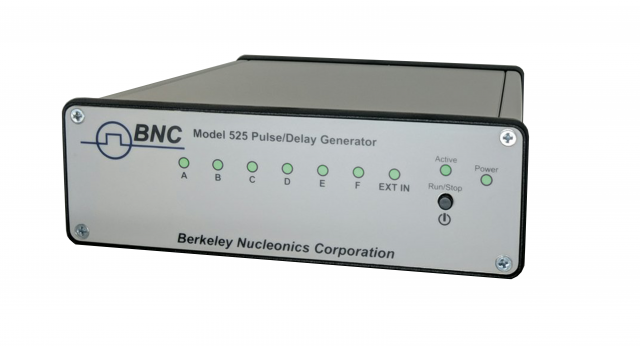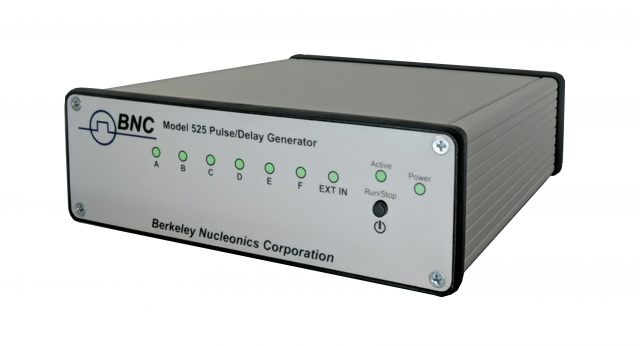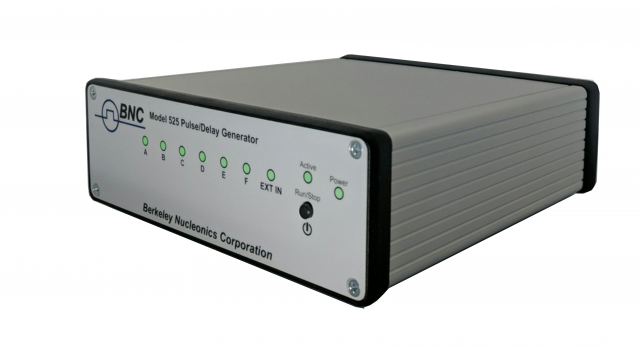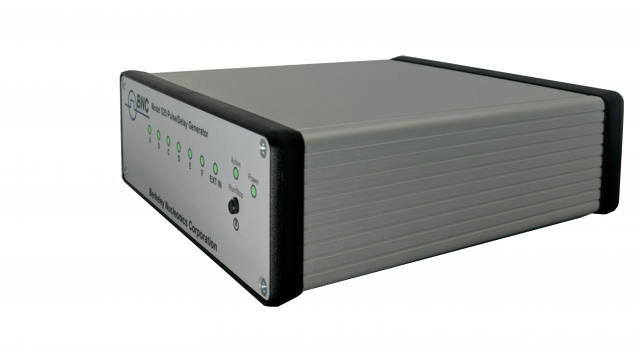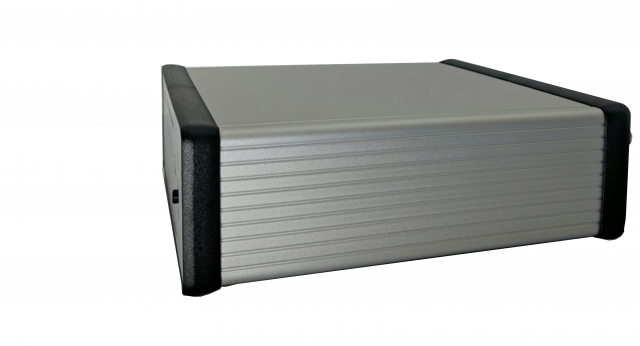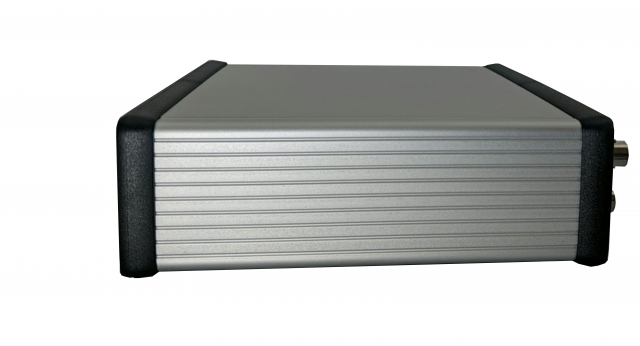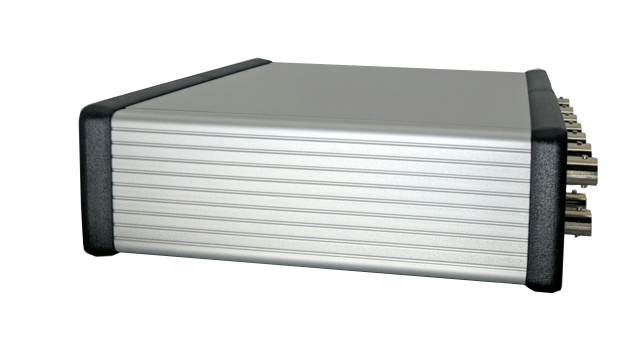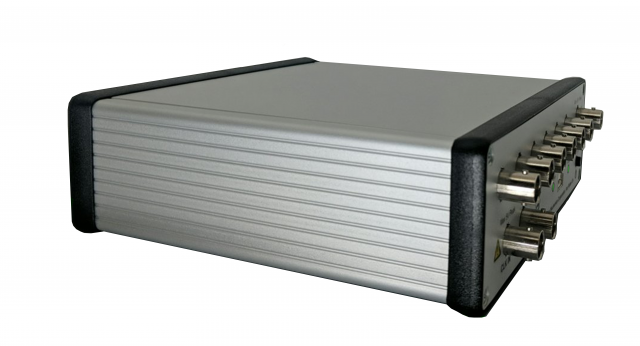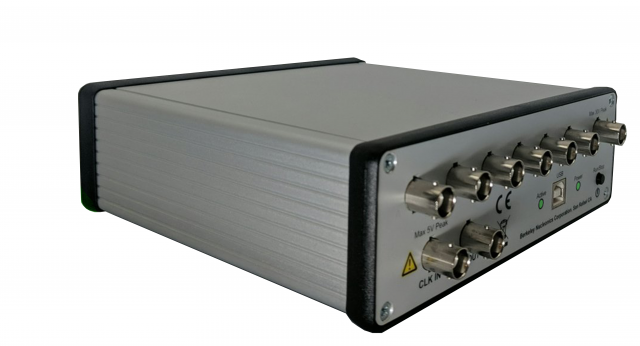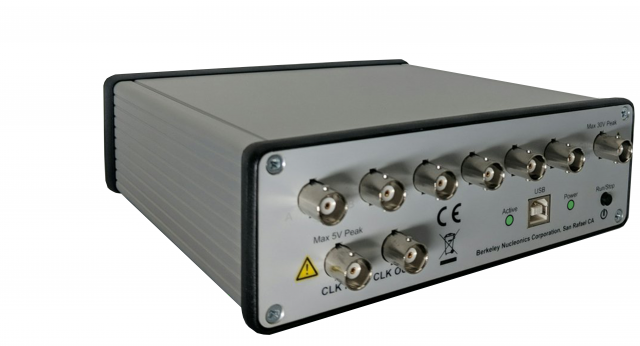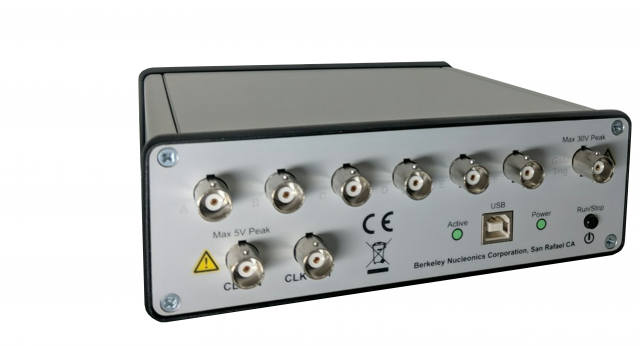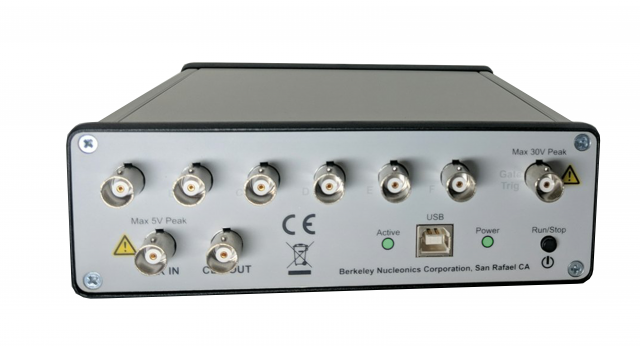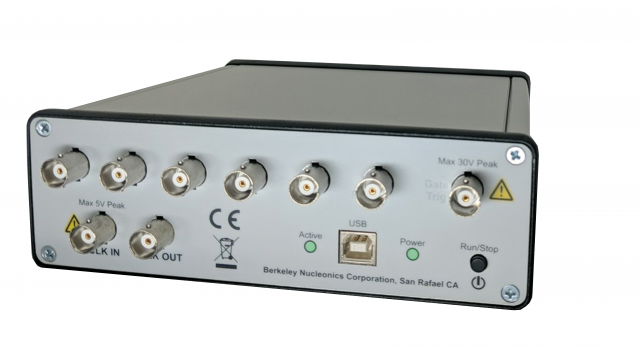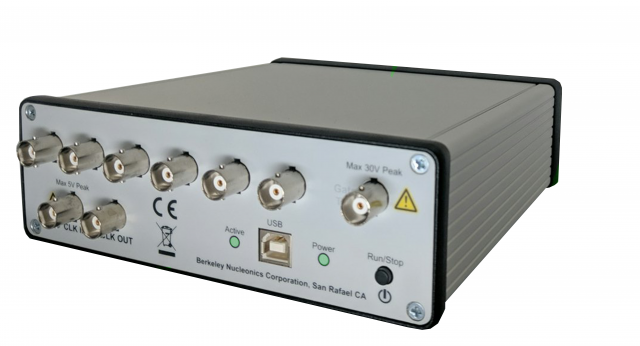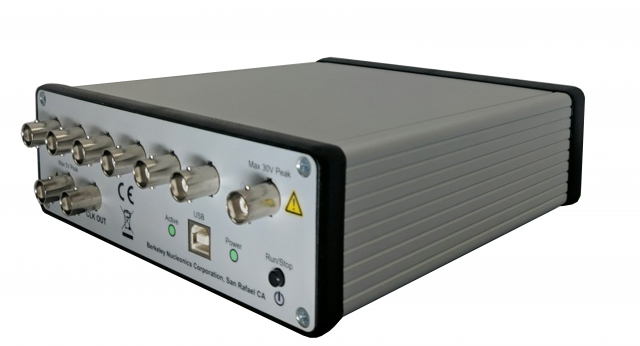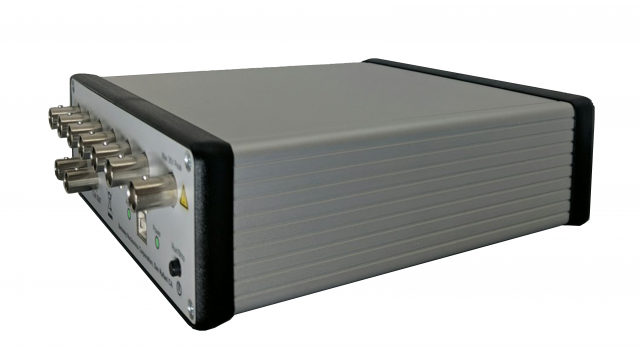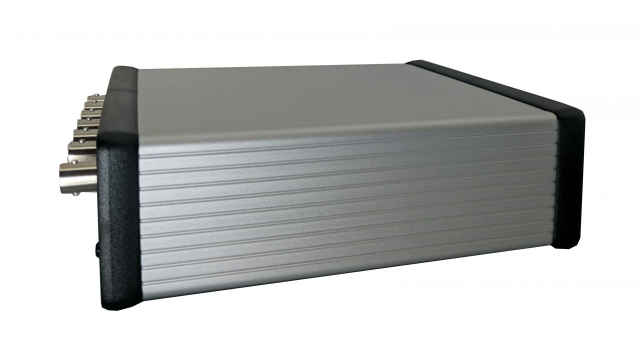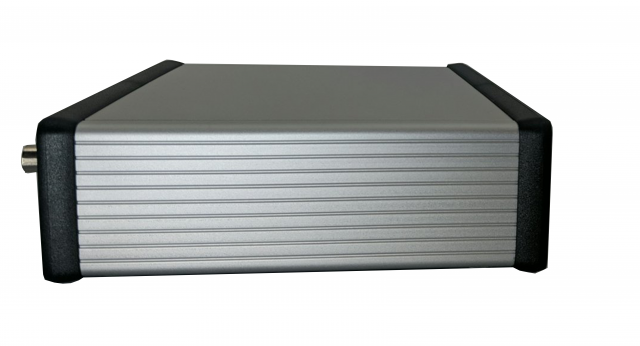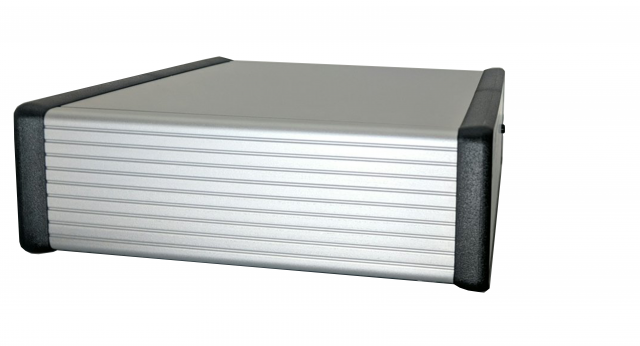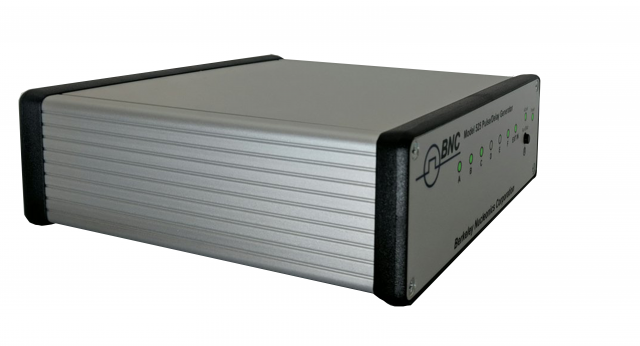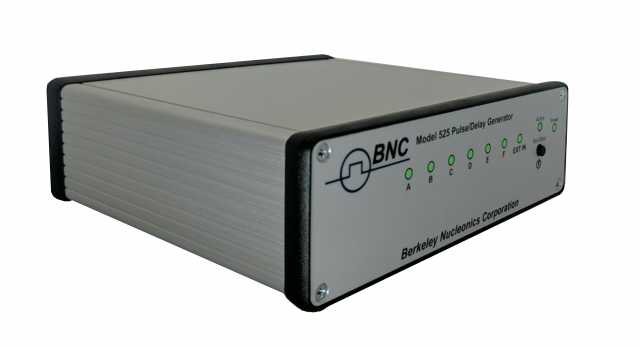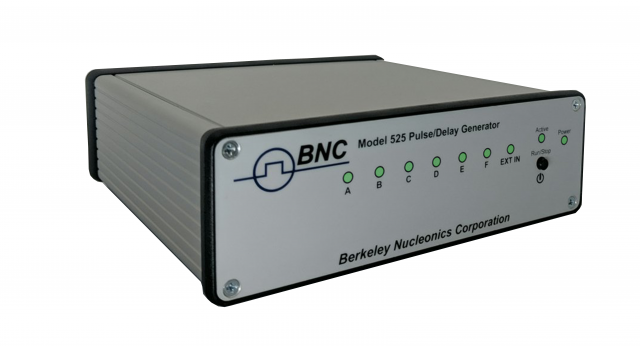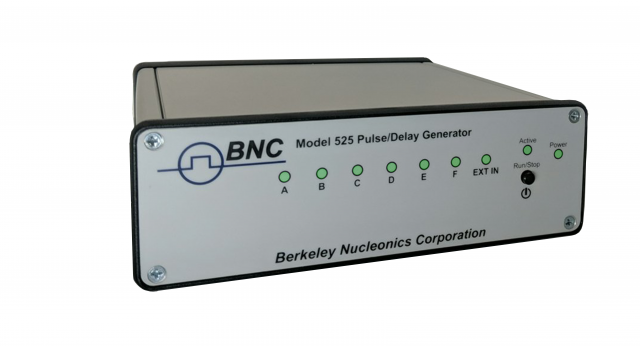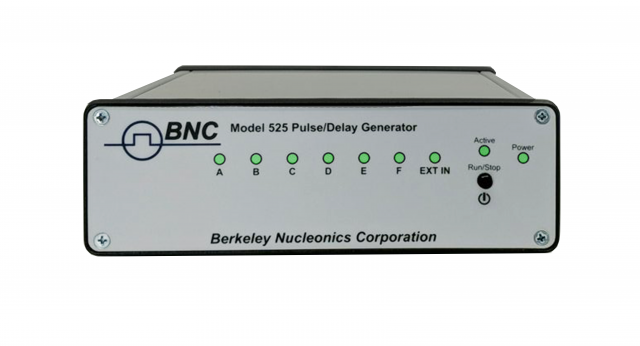
The Model 525 represents a revolutionary new portable pulse/delay generator that offers full functionality in a compact and cost-effective package. At about the size of a small book or external hard drive, 7.125“ x 5.1“ x 1.5”, this is the most channel-dense option in it's class. Nevertheless, you will not be disappointed in its performance, features or programming options. Finally, a low-cost pulse/delay generator that does comproise performance or function!
The Model 525 is powered by a standard USB charger, through a laptop USB port, or a portable battery pack - handy for engineers who are always on the move. The Model 525 can be controlled using its Graphical User Interface which eliminates the bulky front panel components and reduces the potential for mechanical problems. The timing and triggering flexibility is outstanding, with 20MHz rep rates, 4ns timing resolution, <50ps RMS jitter, and internal or external triggering options. Outputs can be selected for each channel, giving users the ability to trigger, gate, or pulse various devices in a research project with different requirements. Single Pulse, Continuous, Burst, Duty Cycle, and Cycle Counting are all selectable options for each channel. Wide pulses are also possible, with a width range of 10ns – 1000s and a delay from trigger range up to 1000s. Trigger externally with signals up to 30 V peak and widths as low as 20ns. Select your trigger edge too - rising or falling edge. This is a great upgrade to the Picosecond Pulse Labs #PSPL2600C Pulse Generator discontinued several years ago.
Overview
Features |
Service Advantage |
|
|
| Internal Rate Generator | |
| Frequency (Period) Range | 0.001Hz to 20MHz (1000s to 50ns) |
| Resolution & Accuracy | 4 ns |
| Jitter | < 50 ps RMS |
| Burst / Duty Cycle Mode | 1 to 1,000,000 pulses |
| Timebase | 100 MHz, low jitter PLL |
| Oscillator | 50 MHz, 50 ppm Crystal Oscillator |
| Pulse Control Modes | Internal Rate Generator, External Trigger / Gate |
| Systems Output Modes | Single, Continuous, Burst, Duty Cycle, Cycle Counts |
| Pulse & Period Counter | 32 Bit |
| Synchronized Update Mode | Updates widths and delays on command |
| Pulse Delay Generation | |
| Width / Delay Resolution | 4 ns |
| Width Range | 10 ns - 1000 s |
| Width Accuracy | 10 ns + 0.0001 x (width + delay settings) |
| Delay Range | ±1000 s |
| Delay Accuracy | 5 ns + (0.0001 x delay setting) |
| Multiplexer | Any or all channels may be combined to any or all outputs. |
| Channel Output Modes | Single Shot, Normal, Burst, Duty Cycle |
| Channel Control Modes | Internally triggered or externally gated. Each channel may be independently set to any of the modes. |
| Jitter (Channel to Channel) | < 250 ps RMS |
| Shipping Dimensions | 12x10x5" |
| Shipping Weight | 5 lbs |
See Datasheet for more specifications
Advanced Features
| Channel Multiplexing | One of the unique features of the Berkeley Nucleonics pulse generators is the ability to combine the timing of any or all channels together and output them out of any of the output connectors. The multiplexing function (MUX) can be set through remote communications via a computer |
| Selectable Clock Reference | The Model 525 offers additional inputs and outputs for external clock synchronizing. User-selectable input and output reference frequency (10 MHz to 100MHz). Synchronize with the Mode Lock Oscillator of a laser or phase lock multiple units with one clock |
| Flexible Gating Options | The Model 525 is packed with gating options for almost any setup. You may gate individual channels or gate all. Gate immediately (output inhibit) or gate after a pulse (pulse inhibit) |
| External Trigger Options | Select channels for internal (free run) / external triggering. Triggered channels have flexible output choices: single pulse, burst at its clock rate, continuous pulse train or a series of on/off pulses (duty cycle) |
| Individual Rates | Each channel can have individual channel rates (either T0 or integer division of T0) |
| Negative Delay | Use the convenient negative delay feature to reference one channel with respect to another channel in positive or negative time increments. By allowing a channel to reference another channel as its trigger, you can synchronize the channels with respect to each other. Note that Negative Delay cannot trigger a channel before your initial trigger. It is intended to complement the channel referencing option |
525 GUI Main Window
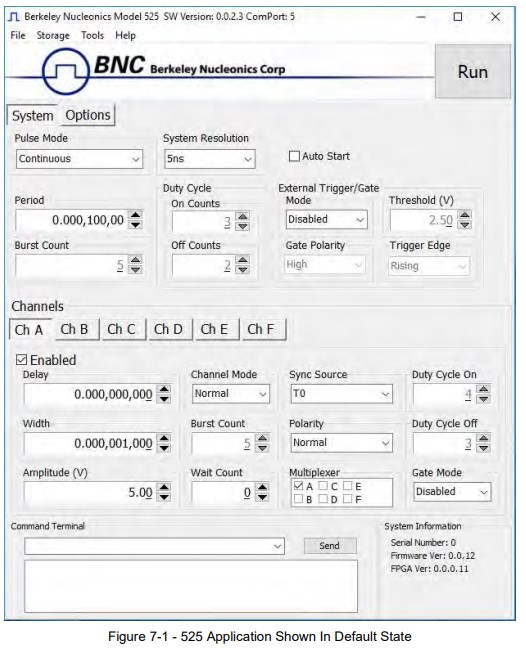
Downloadable resources such as datasheets, firmware, software, drivers and products manuals. Alternatively, you can browse resources directly by visiting our downloads page.
• Product Datasheets
• Product Firmware
• Product Software and Drivers
• Product Manuals
Media
Price List
Price lists are available to our registered users. To view pricing for this and other products, please log in or create a free account.


